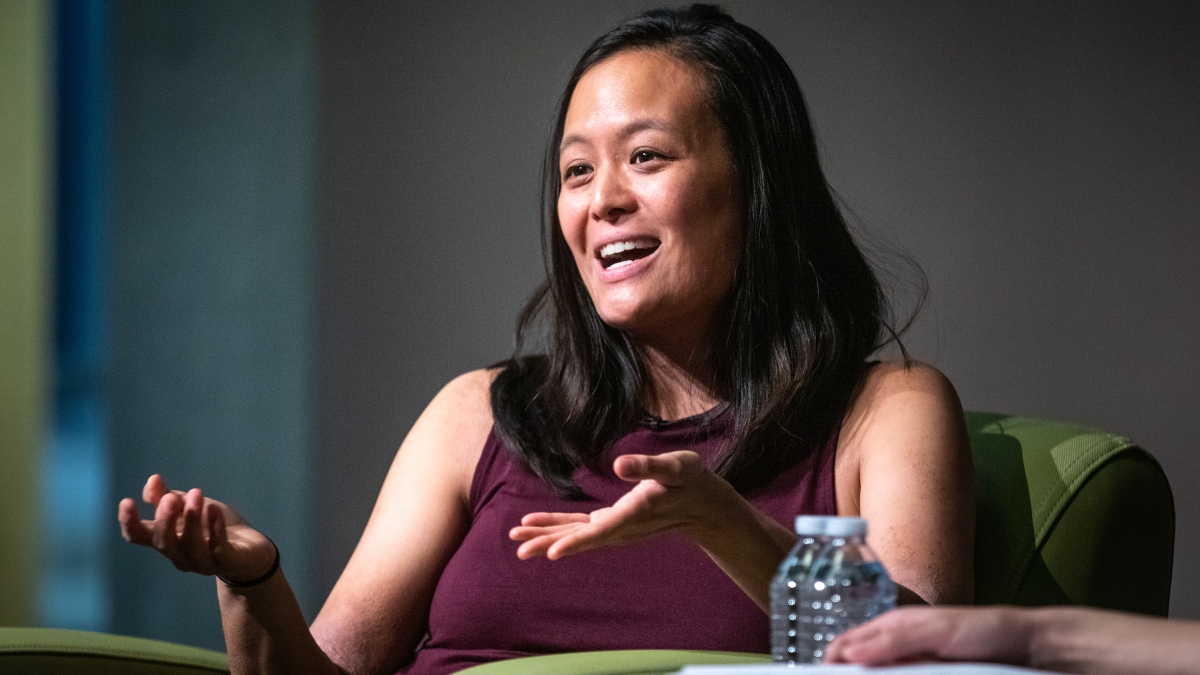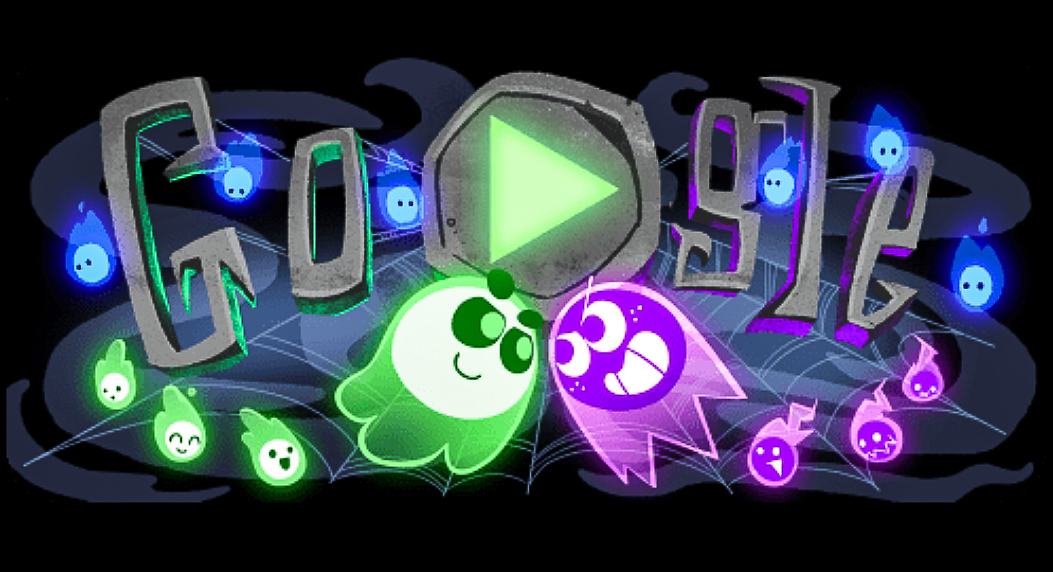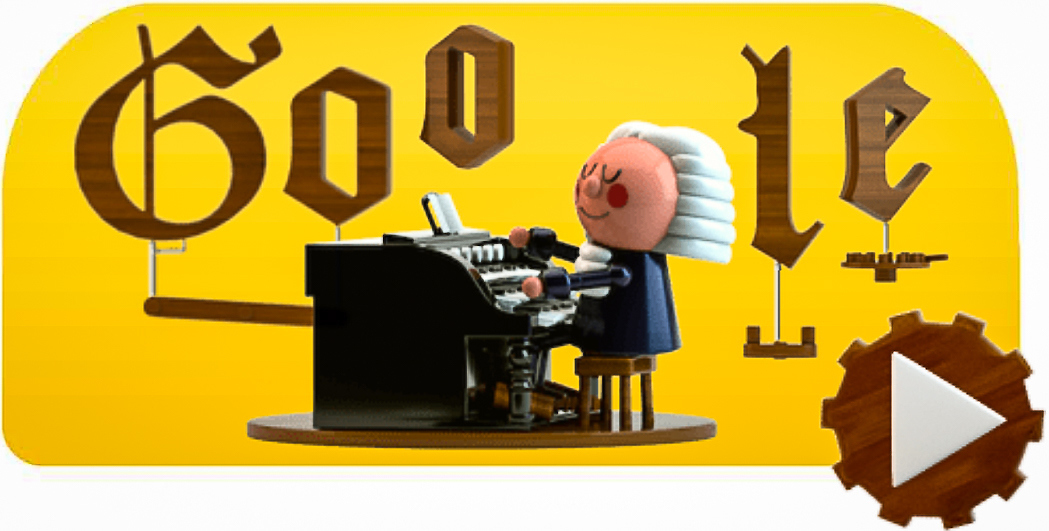Every day, when internet users Google something, they see a Google Doodle that’s fascinating, nostalgic or beautiful. But they’ll never see a Doodle that’s a commercial.
Jessica Yu, the team leader for creating the daily Doodle — the whimsically designed logo on the main Google search page — said the design will never be used to sell anything.
“We consider it a gift to the users,” she said. “There’s no commercial intent behind it. You’ll never see a Doodle for ChromeBooks.”
Yu spoke about visual storytelling at a “Must See Monday” event at Arizona State University's Walter Cronkite School of Journalism and Mass Communications on Monday night.
She said the Doodle started as an “out-of-office” joke several years ago, when Google’s founders were going to the Burning Man Festival.
“They were trying to indicate to people that if the site broke, they were gone," she said. "So they put a burning man behind the logo and called it a day,” she said.
She said the Doodle shows the humanity behind the Google organization.
“We want people to have that serendipitous moment when they see something they didn’t know before, or an unsung hero in history,” she said.
Yu has been at Google for about two years, after several years as a visual journalist. After graduating from Stanford University, she became a one-person design team doing graphics, illustration and layout at a small news organization in Honolulu. Then she was hired as a graphics reporter for the Asia edition of the Wall Street Journal, based in Hong Kong. She eventually became head of the visual team for the newspaper, based in New York. But she knew she always wanted to return to the Bay Area. She found out about the Doodle job two years ago via a Google job alert.
“I was reading the job description: We want somebody who’s a visual person, a storyteller in nonfiction, which journalism should be, and has good judgment,” she said.
“It was a great fit for my skills,” she said. “I didn’t dream about this position because it didn’t exist when I was in college.”
Yu described the process for the Doodles: People inside Google fill out a form to nominate a person or subject for a Doodle, describing why they admire the subject or the emotion they want to evoke, like humor or nostalgia. People outside Google also can send emails or tweet suggestions. The ideas go onto a giant spreadsheet and the team leaders winnow them down and vote on which Doodles will be posted. Then they set the editorial calendar for the entire year. The team will work on 2020 starting this summer. The team creates about 500 Doodles a year but they vary by country and not every person sees every Doodle.
The first Doodles were simple illustrations but they’ve become very sophisticated. Recently, to mark the birthday of J.S. Bach, the Doodle used artificial intelligence to help users compose like Bach.
“We were thinking, ‘How cool would it be to jam with Bach?’” she said. The team trained the Doodle using more than 300 Bach compositions to create a four-part harmony based on the user’s notes.
“We have the ability to make experiences now,” she said.
Yu told the Cronkite students that creating a portfolio of work is the most important part of getting a job in their field. When she was a hiring manager, she spent about 10 seconds on a candidate’s resume.
“I loved when people showed breadth of storytelling ability and everything they did — ‘I did the coding,’ or ‘I took the photos,’” she said. “When you showed everything you contributed, it’s the most important thing.”
A portfolio of good work is an equalizer, she said.
“It doesn’t really matter where you went to school or worked before,” she said.
“But if you have wonderful clips you produced at your previous job, or at school or even on your own — if you’re good, you’re good.”
Top photo: Jessica Yu, Doodle team lead at Google, discusses the search engine's popular changing logo that celebrates holidays and the lives of newsmakers on Monday, April 1, 2019, as part of the "Must See Monday" journalism lectures. Yu also addressed the importance of visual storytelling in the digital age. Photo by Charlie Leight/ASU Now
More Law, journalism and politics

Annual John P. Frank Memorial Lecture enters its 26th year
Dahlia Lithwick, an MSNBC analyst and senior legal correspondent at Slate, is the featured speaker at the School of Social Transformation’s 26th annual John P. Frank Memorial Lecture on…

The politics behind picking a romantic partner
A new study reveals the role that politics play when picking out a romantic partner — particularly for older adults.“Findings show that politics are highly salient in partner selection across gender…

Tips to make tax season less taxing
When it comes to highly unpleasant experiences, filing taxes is probably up there with root canals — which is why people put off doing them. But tax season is here, and in an effort to alleviate…




